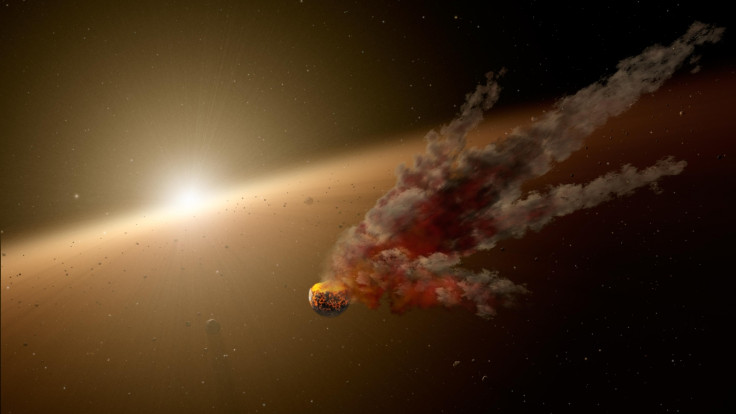Nasa's Spitzer Space Telescope Detects Process of Planet Formation

Nasa's Spitzer Space Telescope may be privy to the birth pangs of a planet or two around a young star in the Vela constellation.
However, the wait for a planet will be a long one spanning millions of years.
The telescope has detected an eruption of dust around the star NGC 2547-ID8 which could be the result of collision of two large asteroids and can eventually lead to formation of planets, reports Nasa. This is the first time scientists have collected data before and after a collision.
The star which is about 35 million years old, lies 1,200 light-years away in the Vela constellation.
Scientists had been regularly tracking the star when it surged with a huge amount of fresh dust between August 2012 and January 2013.
Rocky planets like earth begin life as dusty material circling around young stars. The material clumps together to form asteroids that break up or merge to form planets over a period of 100 million years.
Observations using the infrared telescope that seeks heat signals began in 2012 and was blocked for five months as the sun was in the way. On pointing the telescope back at the star, the team witnessed what seemed like a huge smashup.
"We not only witnessed what appears to be the wreckage of a huge smashup, but have been able to track how it is changing -- the signal is fading as the cloud destroys itself by grinding its grains down so they escape from the star," said Kate Su of the University of Arizona and co-author on the study.
At present, the star is surrounded by a very thick cloud of dusty debris which lies in the zone where rocky planets form.
The results of the study have been posted online in the journal Science.
© Copyright IBTimes 2025. All rights reserved.





















